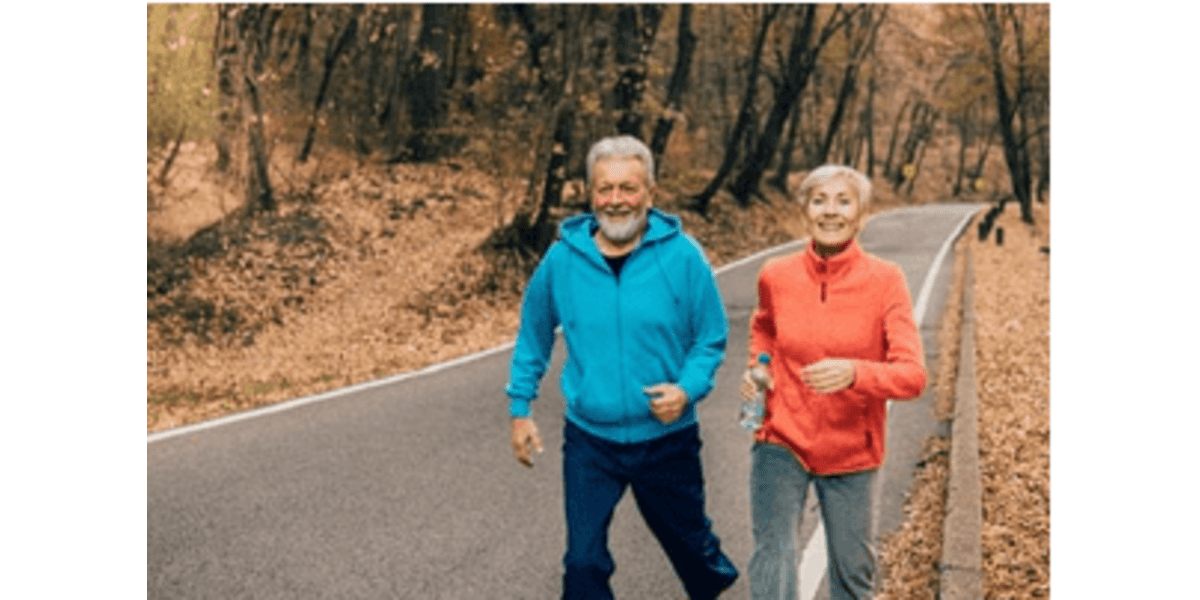"The Art of Walking: A Key to Aging Gracefully and Maintaining Mobility"
Maintaining mobility becomes essential for living a fulfilling and independent life as we age. Changes to our gait, balance, and physical strength can impact our ability to move comfortably and confidently. Loss of mobility not only affects our daily activities but also puts us at risk of falls and decreases our overall quality of life.
Researchers are dedicated to identifying the risk factors for physical disability in older adults and developing interventions to prevent or reverse the loss of mobility. One successful program, CAPABLE, combines nursing, occupational therapy, and home repairs to improve mobility and functionality in low-income older adults.
Key Takeaways:
- Maintaining mobility is crucial for aging gracefully and living independently.
- Loss of mobility can lead to a decrease in quality of life and an increased risk of falls.
- Researchers are actively working on interventions to prevent or reverse the loss of mobility in older adults.
- The CAPABLE program has been successful in improving mobility and functionality in low-income older adults through a combination of nursing, occupational therapy, and home repairs.
Importance of Physical Activity for Maintaining Mobility
Physical activity is vital in improving and maintaining mobility as we age. Regular exercise, such as mobility exercises, is essential for older adults to prevent mobility issues and stay active. Researchers have shown that physical activity, including walking, can enhance seniors' gait, balance, and strength, helping them age gracefully.
Walking is a low-impact exercise suitable for most seniors and can be easily incorporated into their daily routines. Regular walks improve cardiovascular health, strengthen muscles, and increase flexibility. Older adults can enhance their mobility and overall well-being by prioritizing physical activity.
The Benefits of Regular Exercise for Older Adults
Regular exercise, including mobility exercises and walking, benefits older adults immensely. Here are some key advantages:
- Improved gait and balance
- Increased muscle strength
- Enhanced flexibility and joint mobility
- Better cardiovascular health
- Weight management
- Reduced risk of chronic diseases
- Enhanced mood and mental well-being
- Improved cognitive function
By incorporating physical activity into their daily routines, seniors can experience these benefits and maintain their independence as they age gracefully.
"Regular physical activity is the key to maintaining mobility and promoting healthy aging. By taking consistent steps to stay active, older adults can enjoy a higher quality of life and remain independent."
Walking Tips for Seniors
Here are some tips to make walking a safe and enjoyable activity for older adults:
- Choose supportive and comfortable footwear to prevent foot injuries
- Stay hydrated by carrying a water bottle during walks
- Start with shorter distances and gradually increase the duration
- Use walking aids, such as a cane or walker, if needed for additional stability
- Walk during favorable weather conditions and avoid extreme temperatures
- Walk with a companion or join walking groups for added motivation and social interaction
Remember, always consult with your healthcare professional before starting any new exercise program or making significant changes to your activity levels.
Mobility Exercises for Older Adults
In addition to walking, incorporating mobility exercises into your routine can further improve overall mobility. Here are some effective mobility exercises for older adults:
- Seated leg lifts: Sit on a chair and lift one leg at a time, extending it straight out in front of you. Repeat with the other leg.
- Heel-to-toe walk: Practice walking by placing your heel right in front of your toes on each step. This exercise helps improve balance.
- Chair squats: Stand up in front of a chair and lower yourself down as if you were about to sit. Slowly stand back up using your leg muscles.
- Standing knee lifts: Stand straight and lift one knee up as high as you can comfortably. Repeat with the other leg.
Perform these exercises regularly to improve strength, flexibility, and balance, which are vital for maintaining mobility as you age.
| Exercise | Description |
|---|---|
| Seated leg lifts | Lift one leg at a time while seated, extending it straight out in front of you. Repeat with the other leg. |
| Heel-to-toe walk | Walk by placing your heel right in front of your toes on each step to improve balance. |
| Chair squats | Lower yourself towards a chair as if you were about to sit. Stand back up using your leg muscles. |
| Standing knee lifts | Stand straight and lift one knee up as high as you can comfortably. Repeat with the other leg. |

The Benefits of Walking for Older Adults
Walking offers numerous benefits for seniors, supporting healthy aging and overall physical health. As a low-impact exercise, walking is gentle on the joints, making it an accessible and safe option for older adults. Here are some of the key benefits of incorporating walking into your routine:
1. Improved Cardiovascular Health
Regular walking helps strengthen the heart and enhance cardiovascular function. It can lower blood pressure, reduce the risk of heart disease, and improve overall heart health. By increasing your heart rate through walking, you promote better circulation and oxygen flow throughout the body.
2. Strengthened Muscles and Increased Flexibility
Walking is a weight-bearing exercise that helps build and maintain muscle strength. It targets muscles in the legs, hips, and core, promoting better balance, stability, and posture. Additionally, walking can increase flexibility, improving joint mobility and reducing the risk of injuries.
3. Weight Management
Walking effectively maintains a healthy weight or manages weight loss, particularly when combined with a balanced diet. It burns calories, boosts metabolism, and improves overall body composition. Regular walking can contribute to weight management and reduce the risk of obesity-related health conditions.
4. Reduced Risk of Chronic Diseases
Studies have shown that walking can help reduce the risk of chronic diseases such as heart disease, type 2 diabetes, and certain types of cancer. It improves insulin sensitivity, lowers blood sugar levels, and regulates cholesterol levels, leading to better overall health and well-being.
5. Enhanced Mood and Mental Wellbeing
Walking has positive effects on mental health and emotional well-being. It releases endorphins, the body's natural mood-boosting hormones, which can help reduce stress, anxiety, and depression. Walking outdoors also provides exposure to sunlight, promoting the production of vitamin D, which is crucial for maintaining mental health.
6. Improved Cognitive Function
Regular physical activity, including walking, has been linked to improved cognitive function and a reduced risk of cognitive decline. Walking stimulates blood flow to the brain, supporting the growth and preservation of brain cells. It can enhance memory, concentration, and overall cognitive abilities in older adults.
By establishing a regular walking routine and incorporating it into your daily life, you can experience these incredible benefits of walking for seniors. Whether you prefer solo walks, joining a walking group, or exploring local parks, walking is a simple yet powerful way to promote healthy aging and maintain physical health.
Disclaimer: Always consult a healthcare professional before starting any new exercise routine, especially if you have any underlying health conditions or concerns.
Strategies for Staying Active as You Age
Incorporate physical activity into your daily routine to stay active and maintain mobility as you age. Here are some tips for aging gracefully and promoting independence through exercise:
- Find activities you enjoy: Engage in activities that bring you joy and motivate you. It could be dancing, swimming, gardening, or joining a local walking group. Discover what makes you happy and make it a routine.
- Set realistic goals: Start with small achievable goals and gradually increase the intensity or duration. Celebrate your progress along the way to stay motivated and maintain a sense of accomplishment.
- Start slow: Begin any new exercise routine at a comfortable pace. Gradually increase the duration and intensity to avoid overexertion and reduce the risk of injury. Remember, consistency is key.
- Seek social support: Joining group exercise classes or finding a walking buddy can provide social support and make physical activity more enjoyable. Having someone to share your fitness journey with can keep you motivated and accountable.
- Prioritize safety: Wear comfortable, supportive footwear to protect your feet and enhance stability. If needed, make use of walking aids, such as canes or walkers, to assist with balance and mobility. Consider using mobility aids or assistive devices that can help you stay active while reducing the risk of falls.
By incorporating these strategies into your daily life, you can stay mobile as you age, maintain independence, and age well with regular physical activity.

"Exercise is for everybody. It's never too late to start moving and reaping the benefits of an active lifestyle."
Maintaining Mobility Through Healthy Aging
Preventing mobility issues in old age is essential for staying independent and ensuring overall well-being. While regular physical activity is crucial, other strategies can also help improve and maintain mobility as we age. Here are some key approaches:
- Eat a Balanced Diet: A nutritious diet rich in essential nutrients supports bone health and muscle strength. Incorporate a variety of fruits, vegetables, whole grains, lean proteins, and healthy fats into your meals.
- Get Enough Sleep: Good quality sleep is vital for muscle repair and maintaining overall physical well-being. Aim for seven to nine hours of sleep each night to enhance your body's regenerative processes.
- Manage Chronic Conditions: If you have any chronic conditions, such as arthritis or diabetes, work closely with your healthcare provider to manage and control them effectively. Proper management can help prevent further mobility issues.
- Practice Good Posture: Paying attention to your posture can help improve balance and reduce the risk of falls. Maintain an upright posture while sitting and standing, engaging your core muscles for support.
Addressing any mobility issues or concerns early on is crucial. If you experience difficulties or have questions, consult your healthcare provider for appropriate medical advice or support. By incorporating regular physical activity and focusing on healthy aging practices, you can improve your mobility and remain independent for years to come.

Walking Programs for Graceful Aging
Walking is a simple yet effective way to improve mobility and maintain independence as you age. Many organizations offer walking programs specifically designed for seniors. These programs provide valuable guidance, support, and a sense of community to enhance the walking experience.
Joining a walking program can offer numerous benefits, including:
- Structured walking routines tailored to your fitness level
- Opportunities to meet like-minded individuals and build social connections
- Access to trained professionals who can provide guidance and support
- Encouragement and motivation to stay active regularly
By participating in a walking program, you can enjoy the physical, mental, and social advantages of staying active and maintaining mobility as you age.
Conclusion
Maintaining independence and living a fulfilling life as we age requires focusing on mobility and overall health and wellness. By incorporating regular physical activity and other healthy aging practices, older adults can ensure that they age gracefully and enjoy a higher quality of life.
Walking is a particularly beneficial and accessible form of exercise for seniors. It not only helps to improve mobility but also contributes to overall physical and mental well-being. Seniors can age with grace and vitality by making walking a priority and integrating it into their daily routines.
It's important to remember that consulting with a healthcare professional is essential before starting any new exercise program or making significant changes to activity levels. They can provide personalized guidance and ensure the chosen activities are safe and appropriate.
By maintaining independence through walking and staying active, older adults can enhance their mobility, promote senior health and wellness, and enjoy the benefits of active aging. Let's prioritize our mobility and embrace the journey of healthy aging together.
FAQ
How does physical activity help maintain mobility as we age?
Regular physical activity, including walking and mobility exercises, can improve gait, balance, and strength in older adults, which contributes to maintaining mobility.
What are the benefits of walking for older adults?
Walking offers numerous benefits, including improved cardiovascular health, strengthened muscles, increased flexibility, weight management, reduced risk of chronic diseases, enhanced mood and mental well-being, and improved cognitive function.
What are some strategies for staying active as you age?
Strategies for staying active include finding activities you enjoy, setting realistic goals, gradually increasing intensity, seeking social support or joining group exercise classes, prioritizing safety with appropriate footwear and walking aids if necessary, and considering the use of mobility aids or assistive devices.
How can I prevent mobility issues as I age?
Along with regular physical activity, maintaining mobility can be supported by eating a balanced diet, getting enough sleep, managing chronic conditions, practicing good posture, addressing mobility issues or concerns early, and seeking appropriate medical advice or support.
How can I maintain my independence as I age?
Maintaining independence can be achieved by prioritizing mobility and incorporating regular physical activity into your routine, alongside other healthy aging practices such as eating a balanced diet, getting enough sleep, and managing chronic conditions.
What should I consider before starting a new exercise program?
Before starting any new exercise program or making significant changes to your activity levels, it is important to consult with a healthcare professional to ensure it is safe and appropriate for your individual needs.
Recent Featured Articles:
Pickleball Drills for Skill Development: Boosting Your Performance
DISCLAIMER
This document is provided for general information purposes only and should not be relied upon as providing legal advice, technical, or specific operational guidance to the reader, whether as to the practices described in the document or the applicable legal requirements and regulations. Save on Sneaks expressly disclaims any responsibility for liability arising from or related to the use or misuse of any information in this document.



